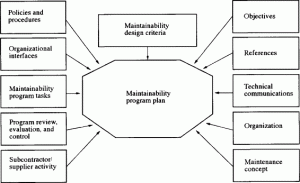How to Design a Conceptual Framework
Design a Conceptual Framework
Whether you’re conducting a qualitative study or a quantitative experiment, it’s vital to start your research project with a well-defined conceptual framework. A conceptual framework is a written or visual representation that helps you organize your ideas and determine which variables you will measure and how they relate to each other. It is also a great way to keep you on track throughout your research process and give your research a clear direction.
Creating a conceptual framework can seem overwhelming at first, but we’re here to help! This article will explain everything you need to know about conceptual frameworks, including how they are designed and what steps you need to take to create your own.

A conceptual design framework is a set of concepts and theories that you use to interpret the data you collect. They are often used to help you understand the relationships between variables and provide a deeper understanding of your research topic. The conceptual framework reflects your inner beliefs and assumptions about the phenomenon you are studying, as well as your understanding of the cause-and-effect relationship between the independent and dependent variables.
How to Design a Conceptual Framework
Conceptual frameworks can be either a taxonomy or a model. A taxonomy is a classification of something while a model is a visual or verbal representation that represents a system in a simplified way. A model is more like a mathematical description while a taxonomy is more descriptive and subjective.
The process of creating a conceptual framework begins with selecting your research topic. Then, you should do a literature review by visiting studies on similar topics from reputable sources. This will allow you to find out what the current state of knowledge is on your chosen topic, as well as how other researchers have used their conceptual frameworks to analyze the data and reach their conclusions.
Once you have gathered all the relevant information, you should identify the relationship between your independent and dependent variables. This can be done using a chart, flowchart, mind map or other tool. You can then draw arrows to show how your independent variable affects the dependent variable in your research.
Developing a conceptual framework will save you time by eliminating the need for multiple experiments and surveys, and it will make your research more coherent and easier to understand for those who read it. It will also help you stay on track throughout your research process, as it will guide you through the various stages and prevent you from collecting or reviewing data that is not relevant to your research question.
You should present your conceptual framework in the introduction, literature review or opening chapter of your paper. The order of presenting it will depend on your discipline and research type, but most papers will include the framework after presenting the research question and before outlining the methodology. If you are conducting a quantitative experiment, the framework will be an important part of your statistical analysis as it will define which statistics to use and how they should be interpreted.